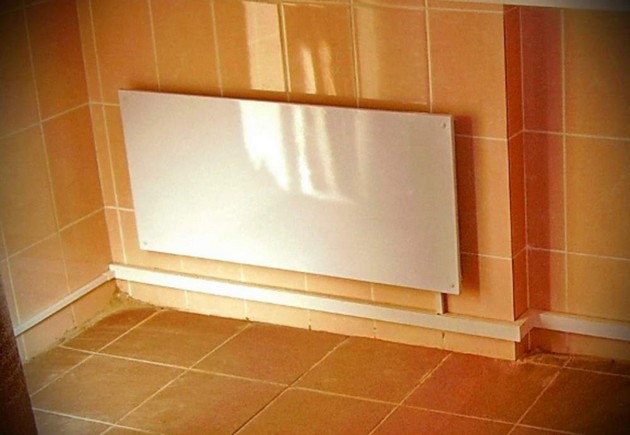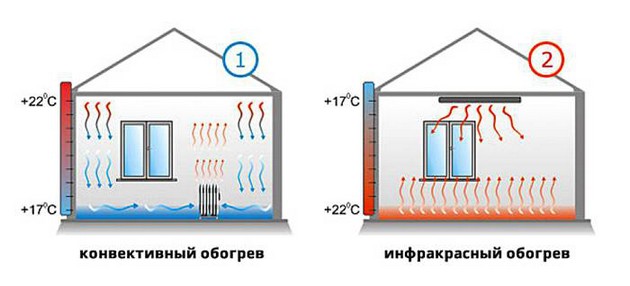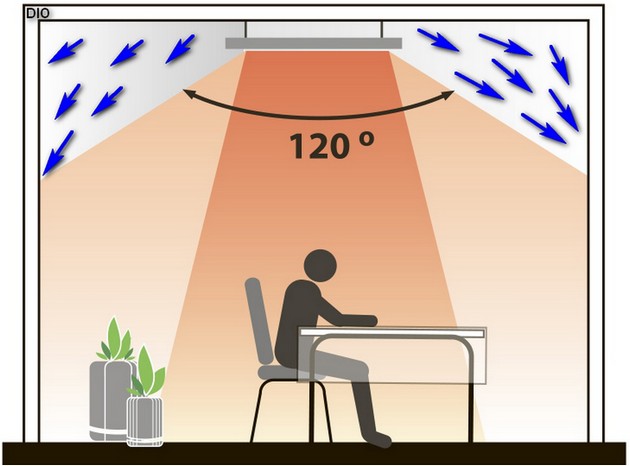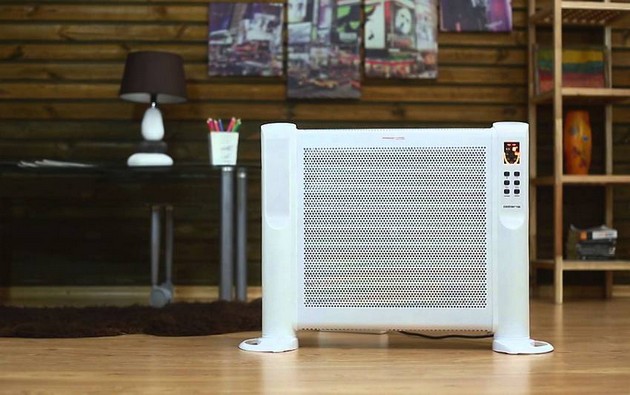Sections of the site
Editor's Choice:
- How to unlock ariston washing machine
- Pros and cons of LED lighting
- Pulse relay: device and connection
- How to calculate the illumination of a room with LED lamps?
- Plastic box - do-it-yourself aesthetic view of electrical wiring
- Electricity consumption of a warm floor: electric and film
- Installing a pump in a well: how to properly install pumping equipment
- Electrician Toolkit Overview
- How to choose a water heater: the most complete list of evaluation criteria
- 1 acoustics on the example of Sven SPS-860 and Realtek ALC889 codec
Advertising
| How to choose the best infrared heater |
|
An infrared heater is a heating device that transfers heat energy to the environment using infrared (IR) radiation. Often such devices are called reflectors, which is not entirely correct. The infrared heater does not heat the air, but transfers thermal energy to surrounding objects, which increase the temperature of the air masses. This principle provides significant savings compared to the convection heating method, since energy is not spent on heating unused spaces in the room. Infrared heaters allow you to get an instant effect immediately after switching on. The modern market for space heating devices is saturated with a variety of devices to the limit. All of them are divided into types and types according to the principle of operation and design features. Household infrared heaters are one of the most common in the market of climate technology. They have a number of significant advantages over other household appliances for heating. In this article, we will tell you how to choose an infrared heater for summer cottages, houses and apartments, and also give instructions on how to make such a device yourself. Let's start with the principle of operation and design of the device.
The principle of operation and design features of IR heatersAs mentioned above, these household appliances are radically different from convection heating devices. They do not heat the air, but the surrounding objects in the room: furniture, appliances, floors and walls. Infrared devices can be called a small home sun, the rays of which penetrate the air without heating it at all. Only objects that do not transmit light heat up under the influence of this radiation and transfer heat to the surrounding air, heating it to the required temperature. Infrared radiation is perceived by human skin as heat emanating from our sun. We do not see these rays, but we feel them with our whole body. This radiation warms us regardless of external factors. He is not afraid of drafts and other natural factors. The main thing is that the radiation does not have insurmountable obstacles in front of it and freely passes to the required place. In the same way as our luminary, infrared heaters also act, because the wavelength of radiation from these devices is similar to the solar IR spectrum.
Converter-type heaters are unable to instantly create a comfortable temperature in the room, because the principle of their operation is based on the constant movement of warm air upwards. In this case, first of all, it warms up under the ceiling space, and only after a long time does the mixing of warm and cold air masses occur, which leads to the creation of a comfortable thermal regime throughout the room. During this period, a person has to freeze.
Infrared heaters work quite differently. A person feels heat from this type of household appliance immediately after turning on the device, but it can not be felt in the entire room. The infrared heater acts locally, that is, thermal energy is directed to a specific place. On the one hand, this allows you to create an instant effect of temperature increase at the required point in space, on the other hand, it saves energy resources. This is what household heaters that use infrared radiation for work are good for.
There are no complicated parts inside ordinary electric infrared heaters. An aluminum reflector is mounted in the body of the device, most often made of metal. The main part of the structure is installed on it - the heating element, which is the "heart" of the device. Currently, there are several varieties of this part: tubular (heater), halogen, ceramic or carbon. Also, in heaters of this type, thermostats are installed to adjust the temperature and special sensors that turn off the device in emergency situations.
In addition to electric infrared heaters, there are devices that use other energy sources: solid and liquid fuels, as well as natural gas. But such devices are used in domestic conditions extremely rarely and we will not consider them. We have considered the principle of operation and design features of IR heat sources, now let's move on to the pros and cons of this household appliance. Pros and cons of using infrared heatersIR heaters, like any other household appliances, have certain advantages and some disadvantages. All these factors must be considered when choosing equipment for space heating. So, below are the main advantages of using infrared heaters in the home.
The disadvantages of electric infrared heaters include the rapid cooling of the room after the device is turned off, as well as the need to comply with safety rules to prevent thermal burns. But the pros of using infrared heaters are much greater than the cons. Having considered the advantages of using technology, we move on to the main part of the article, namely: the choice of an infrared heater for an apartment, house or cottage. Choosing the Right IR HeaterSo, having weighed all the advantages of an electric infrared heater, we proceed to its choice in the climate technology market. When purchasing a device, first of all, you should pay attention to the appearance of the device. It is simply obliged to inspire confidence in the consumer. The quality of the technique should have a strong and stylish body, a reliable power cable and an excellent plug. Do not be tempted by devices with a very low cost! Many unscrupulous manufacturers reduce the cost of their products by using low-quality components. Such an IR heater is simply dangerous and its use can lead to fire. Remember this!
Having determined the required power of the IR heater, you can start choosing a device according to design features, technical characteristics and other important features. The primary task that needs to be solved at the preliminary stage is to decide on the type of installation. There are only three of them: floor, wall and ceiling. Let's consider each of them separately.  Having decided on the installation site of the equipment, you should choose a heater model in accordance with these criteria. Regardless of which type you choose - ceiling, floor or wall, you need to know exactly which heating element in this household appliance is most suitable for you. There are four main types of this main part of the IR heater, which we will discuss below. 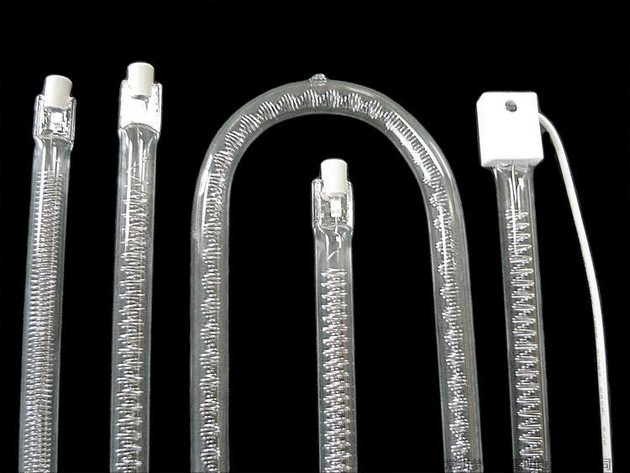 The main criteria are described above, taking into account which infrared heaters should be selected. But it should be noted that there are other factors that also need to be considered when buying a device. This is the presence of a thermostat capable of maintaining a constant temperature in the room; sensors that protect the overturning device and severe overheating of the structure; small mobile remote control for comfortable operation and so on.
So, summing up all of the above, here is an algorithm of actions that you must take to correctly select the best infrared heater for a summer residence or other property:
With the choice of the device, we are done! But one question remains: what to do if it's cold, and there is no way to buy a heater. This often happens in the country, with a sharp change in weather. No choice! You will have to make an IR heater yourself, and we will tell you how to do this in the next chapter. Making an infrared heater with your own handsBelow we will briefly describe how to make a simple do-it-yourself infrared heater from improvised materials that are almost always present on the farm. For a person, as they say, with hands, it will not be difficult. To perform the work, you will need the following materials and components: aluminum or copper foil, two glass rectangles of the same size, an ordinary candle, any sealant, epoxy fast-curing glue, a powerful electric power cord with a plug, a napkin, cotton buds and a multimeter.
Below is a step-by-step instruction for making a small IR heater yourself.
Important! The pictures show an experimental low-power heater. To make a more powerful infrared heater, glasses of a different size should be used, approximately 50 × 50 cm.
This completes the manufacture of an infrared heater with your own hands. Of course, you can put an additional sheet of foil under the entire structure for greater heat transfer, but this is at your discretion. Even without it, such a device is able to heat a small room! ConclusionWe hope you understand how to choose a good infrared heater using the information from the article. We deliberately did not talk about well-known manufacturers of such household appliances. There are many and the choice is yours! But remember, the main thing is not the brand, but the quality of the product! Related videos |
New
- I am a big tea lover. I especially respect green
- Ivan-tea with the addition of mint The chemical composition of the plant
- What is useful wheat porridge for the body
- Recipe: Soy Schnitzel - An excellent and tasty substitute for meat during Lent
- How to make ginger tea
- Coconut manna: benefits and harms, recipes with organic product Coconut paste how to use
- "Healthy" vegetable oils - a possible cause of obesity
- Adnexitis: causes, symptoms and treatment of the disease
- Herpes during pregnancy. Types, symptoms, treatment. Treatment of herpes during pregnancy Ointment for herpes during pregnancy
- What is pink catharanthus and how to care for it?

